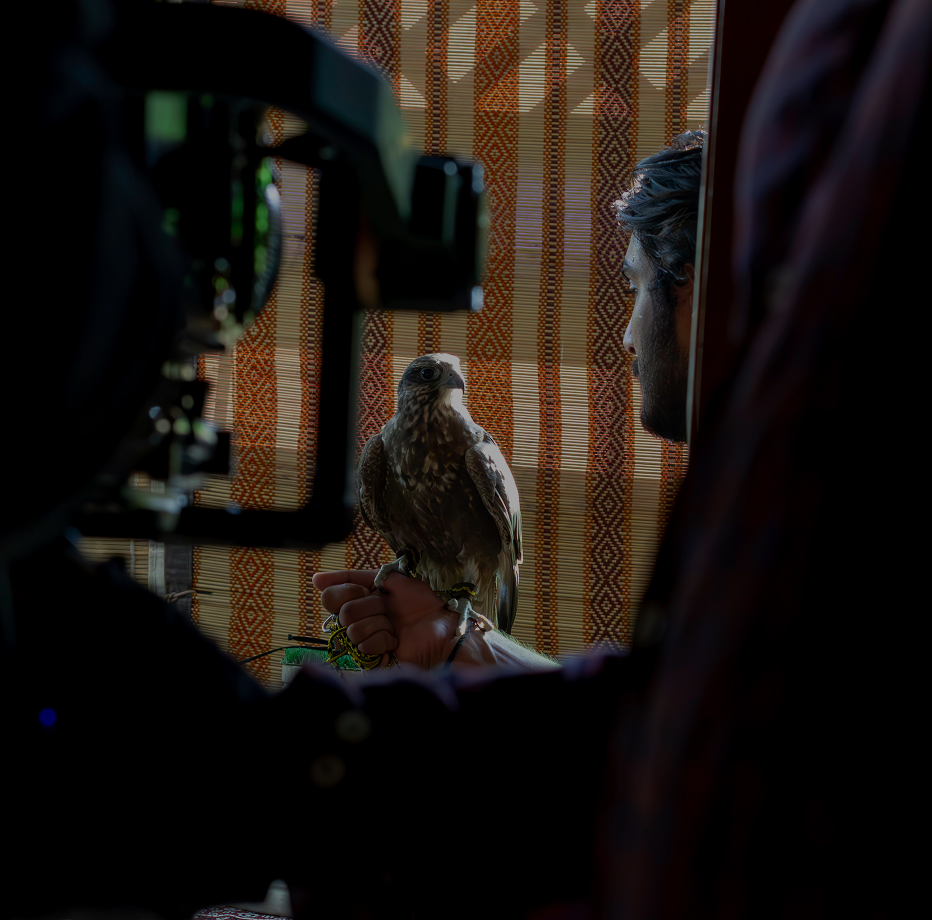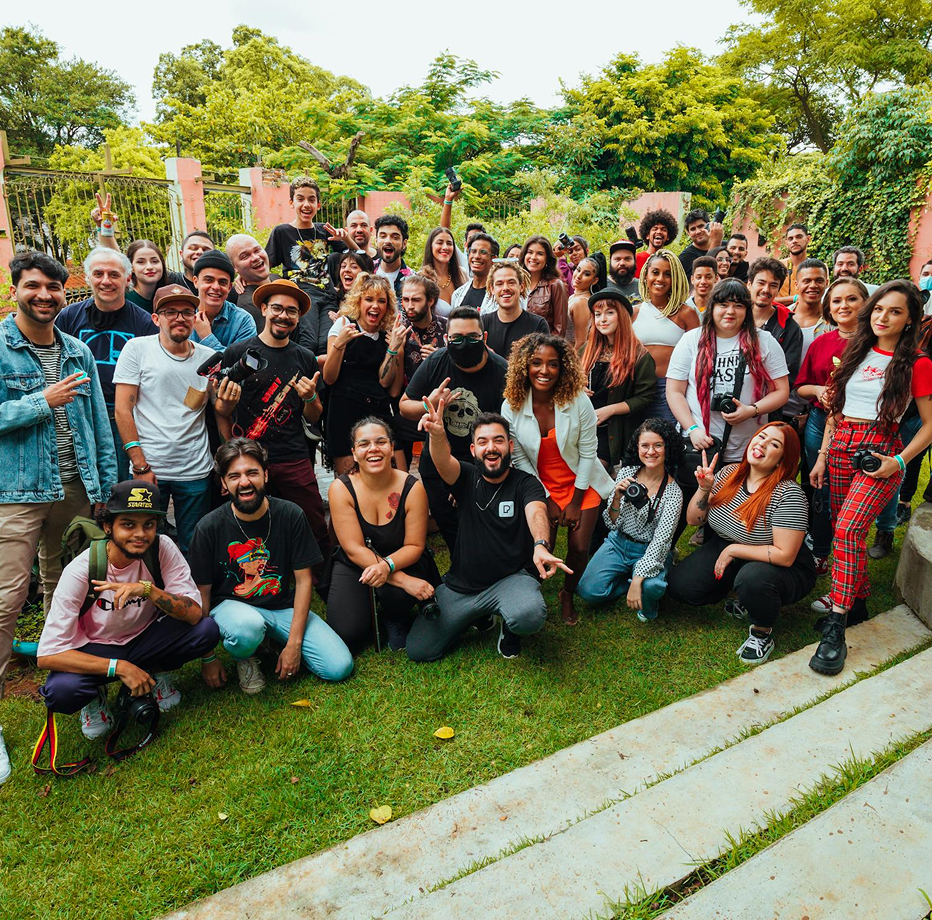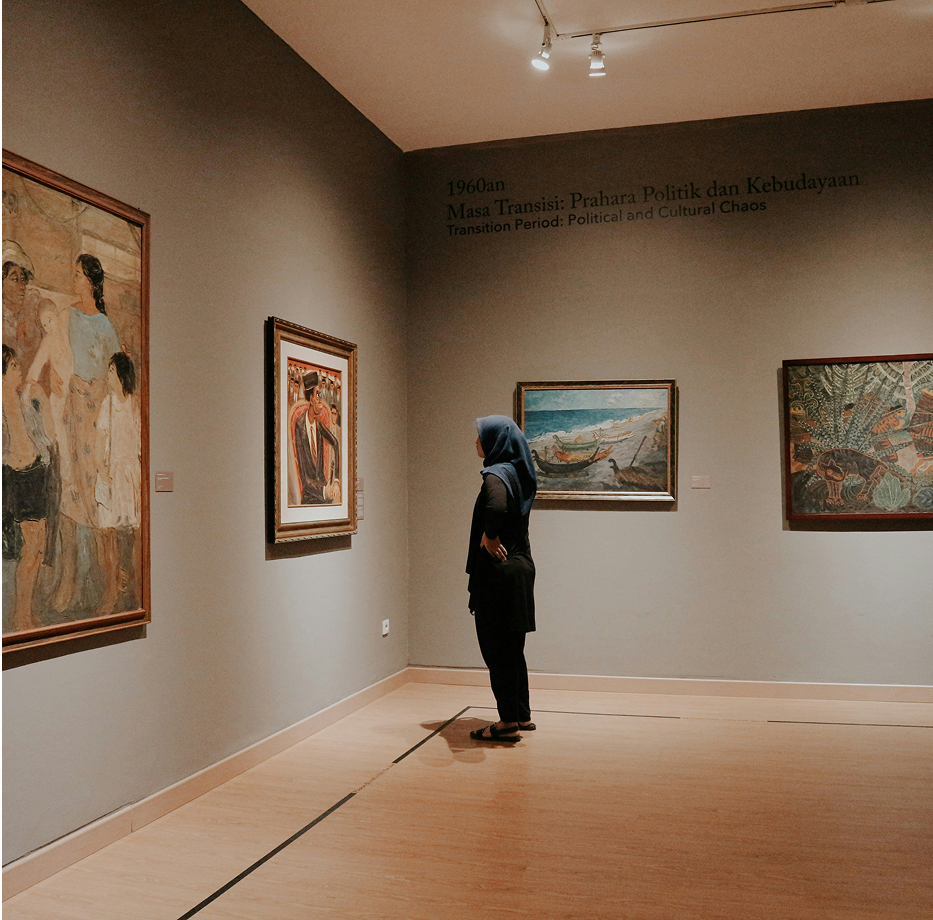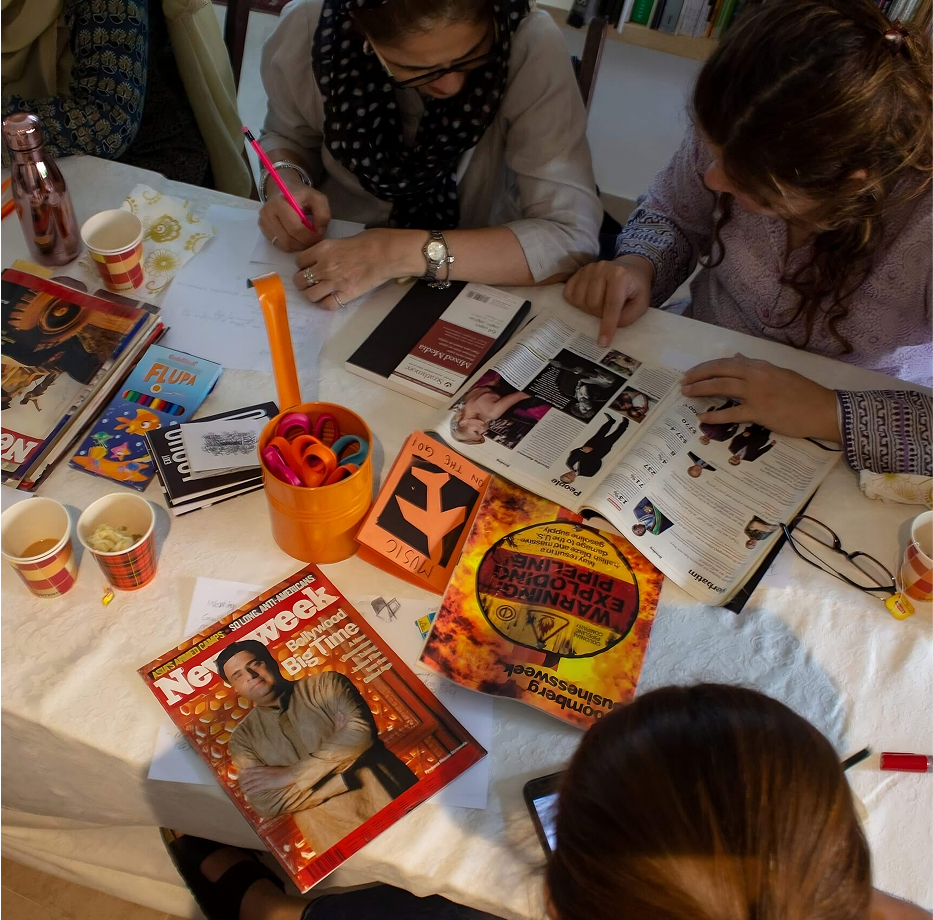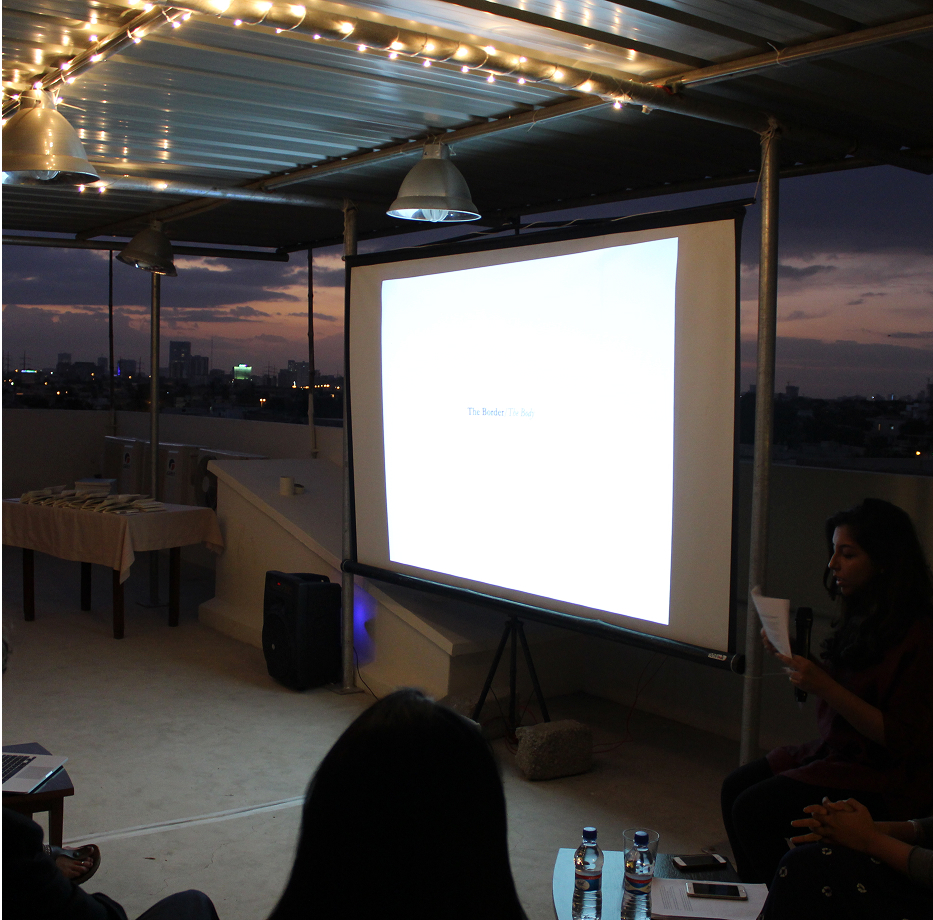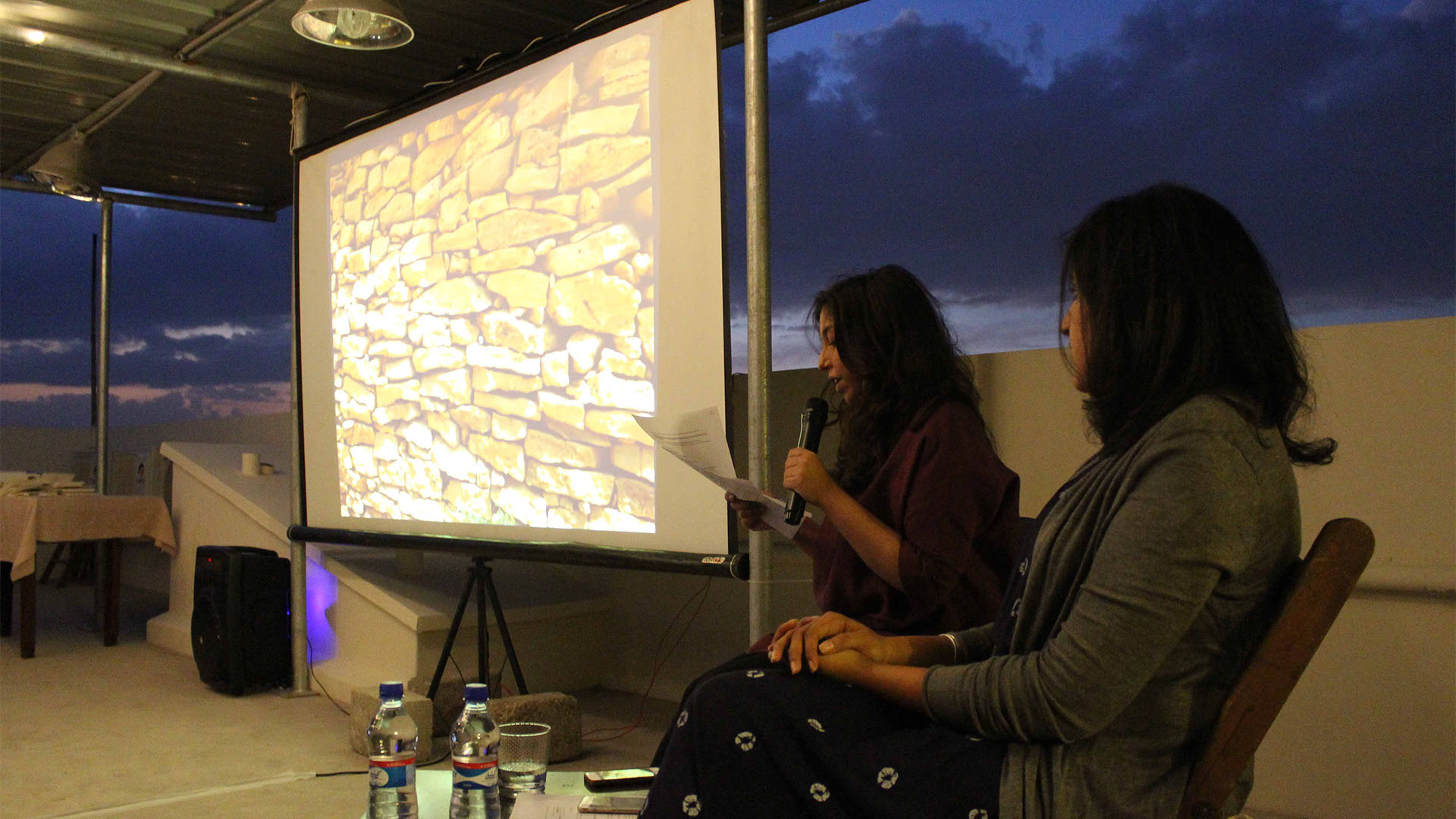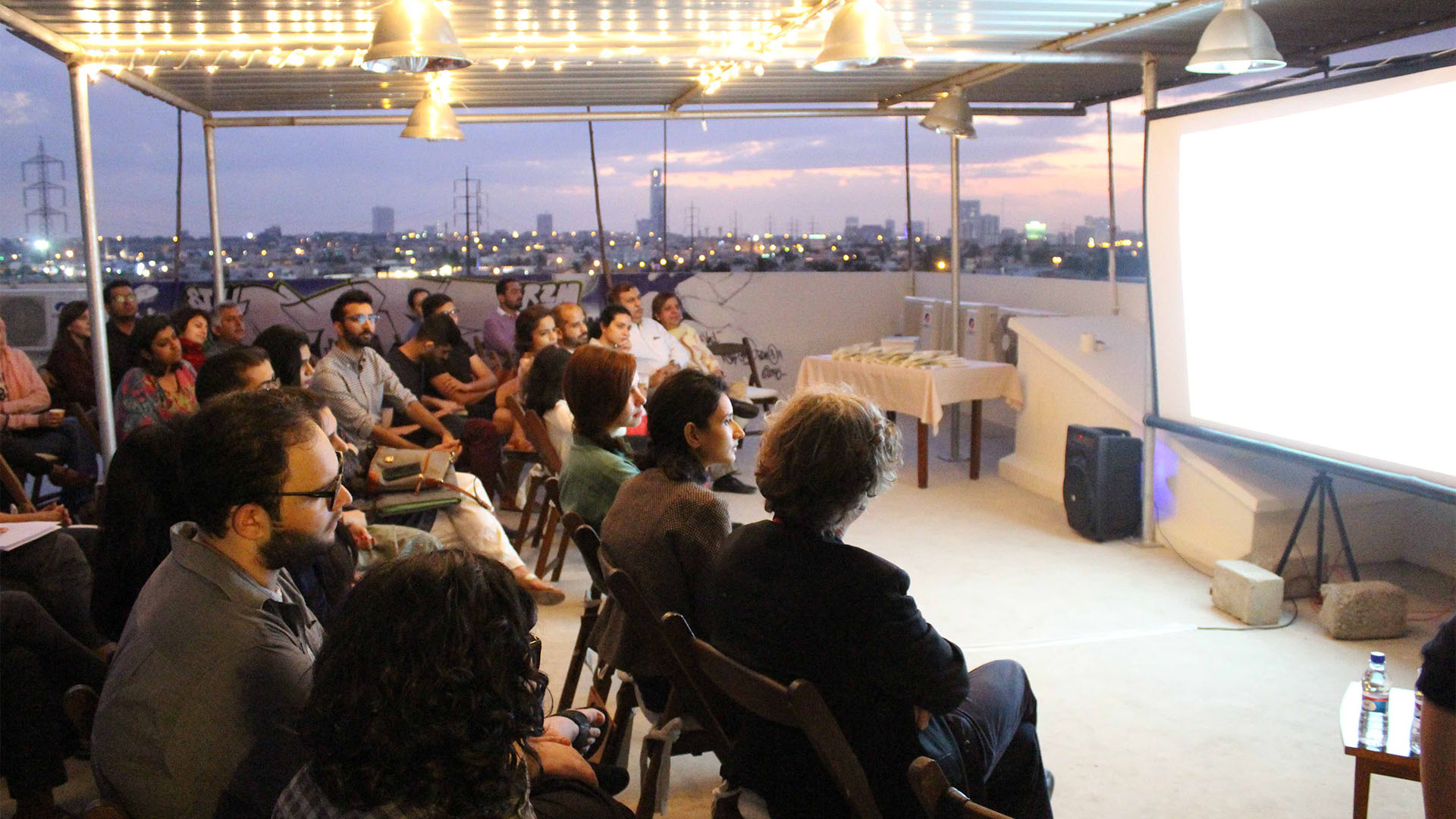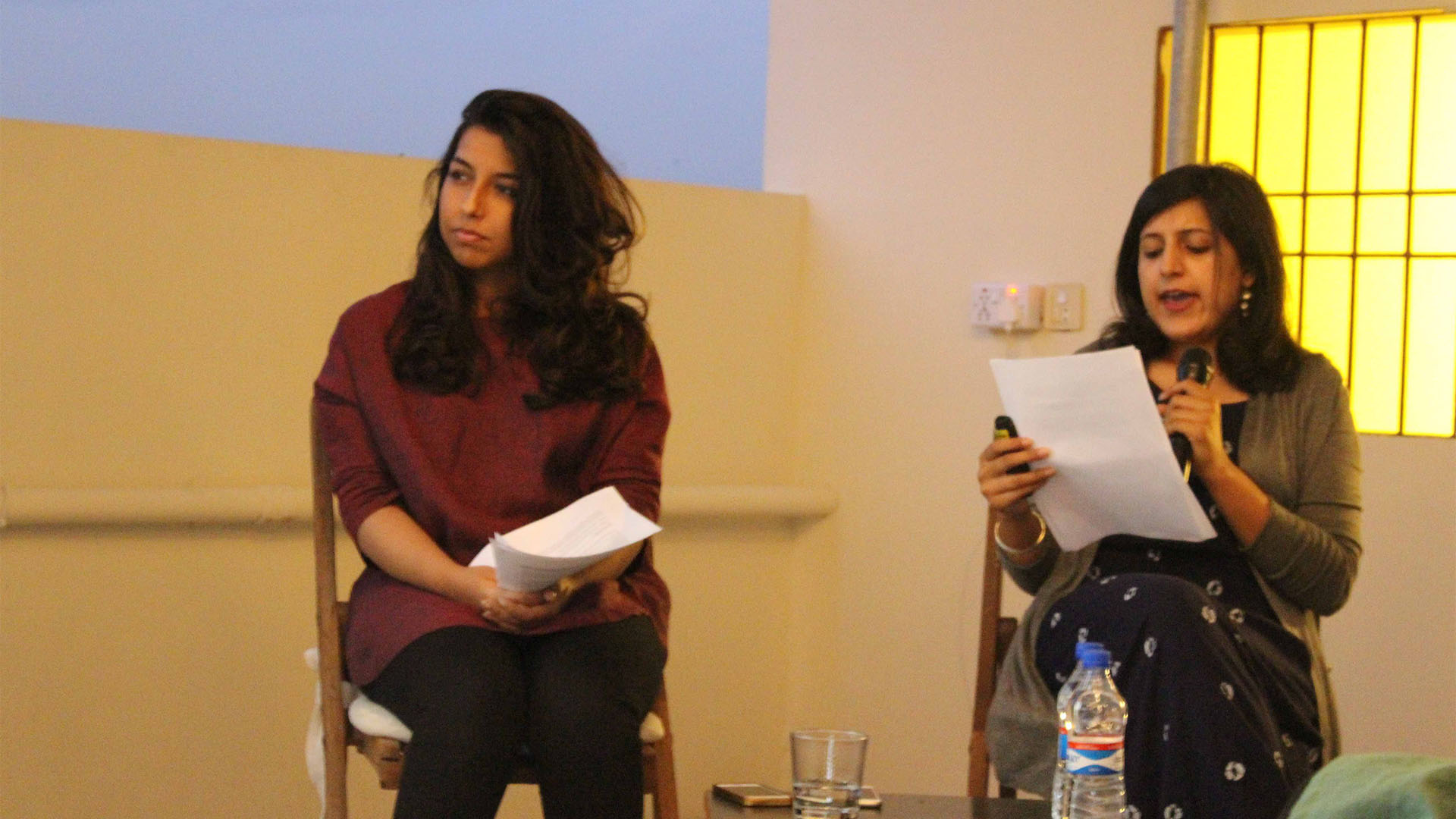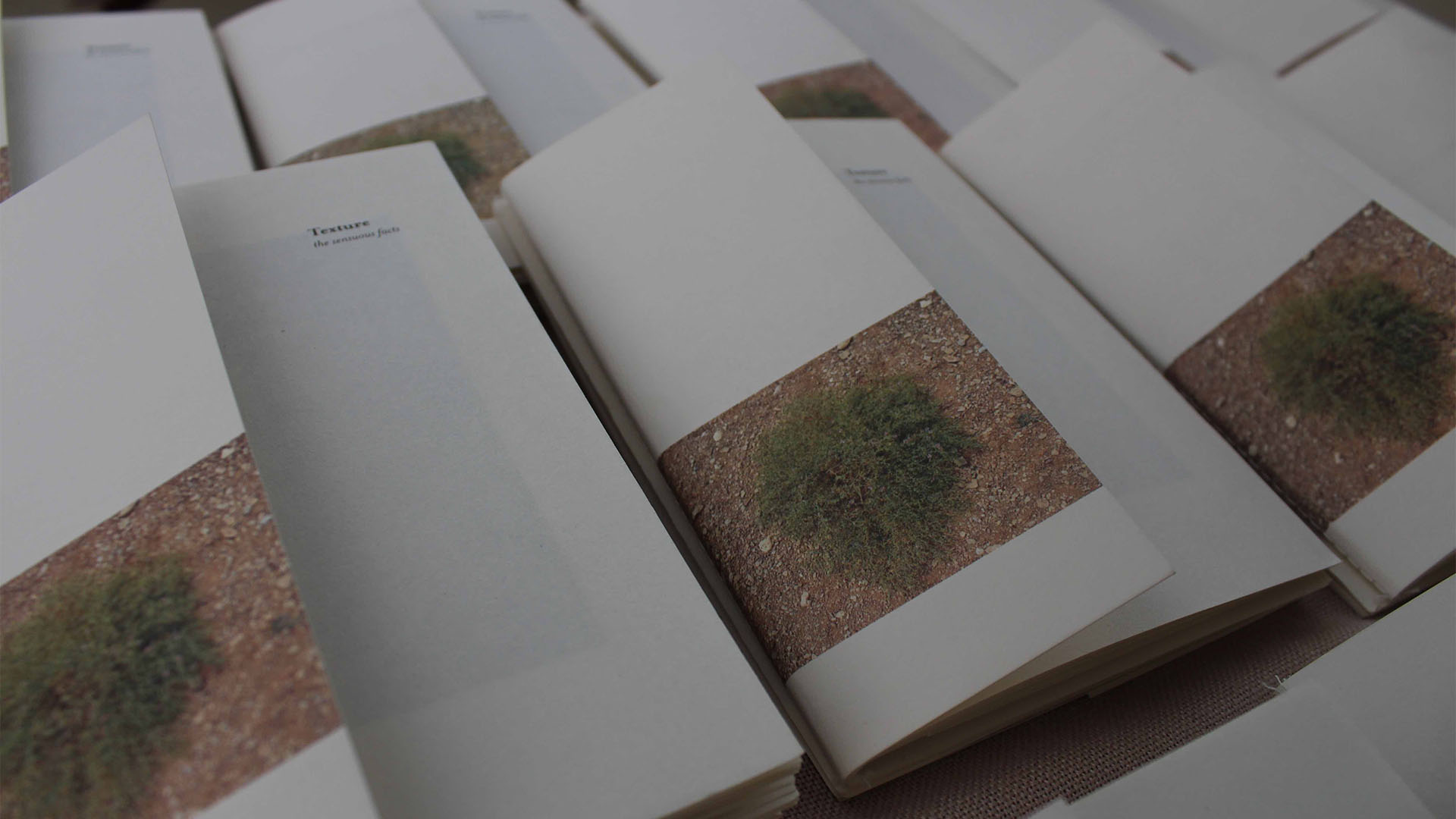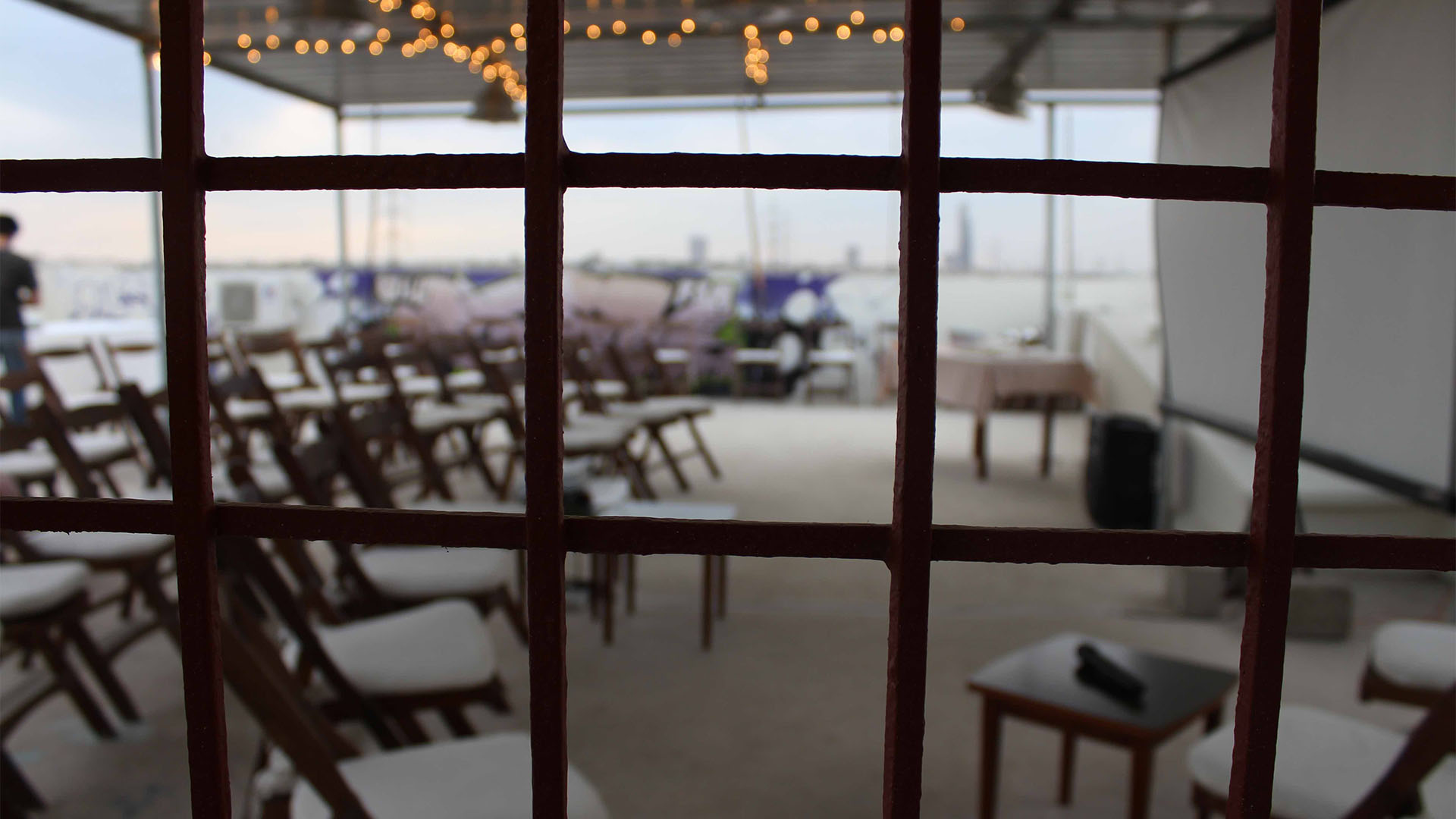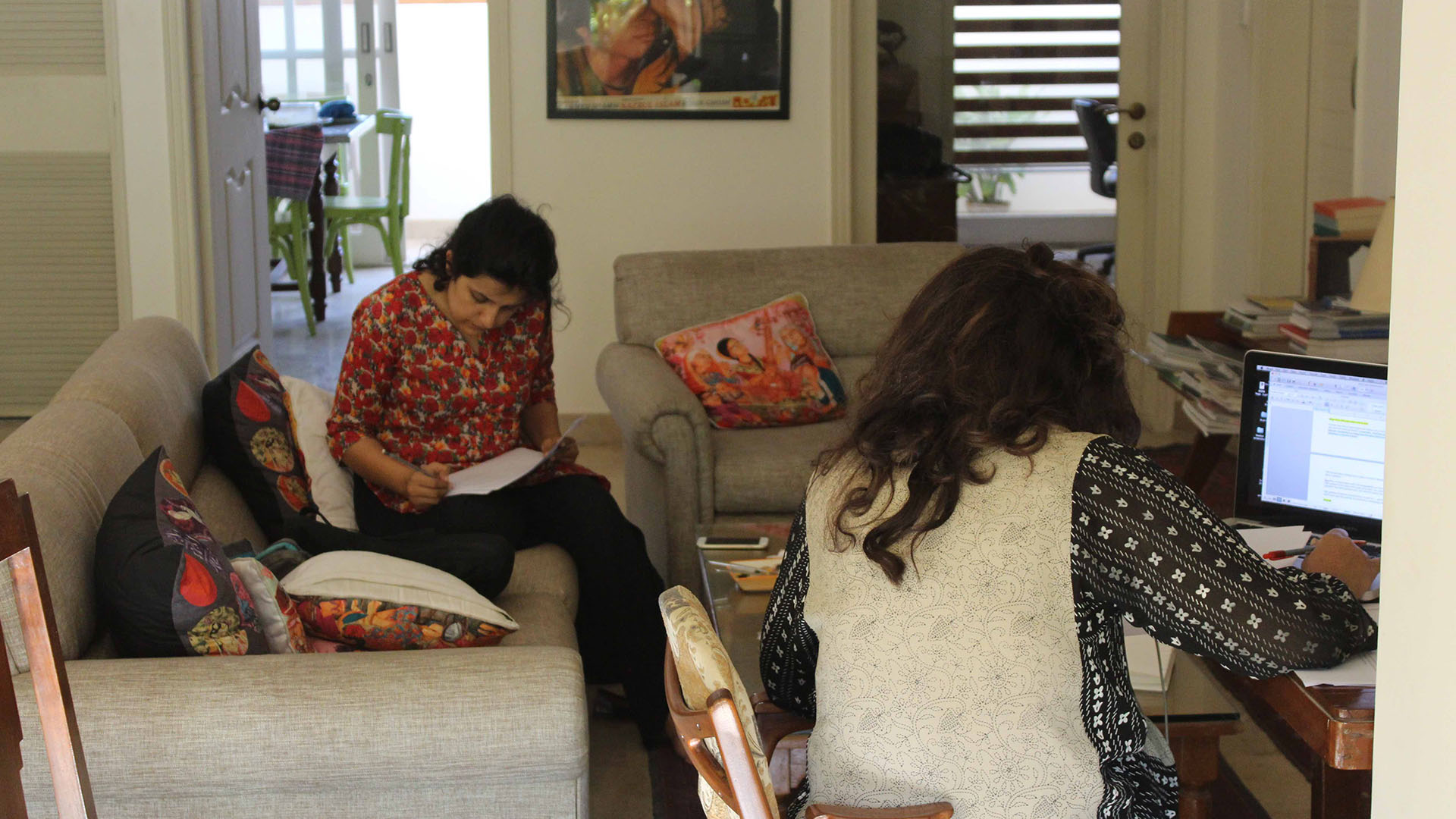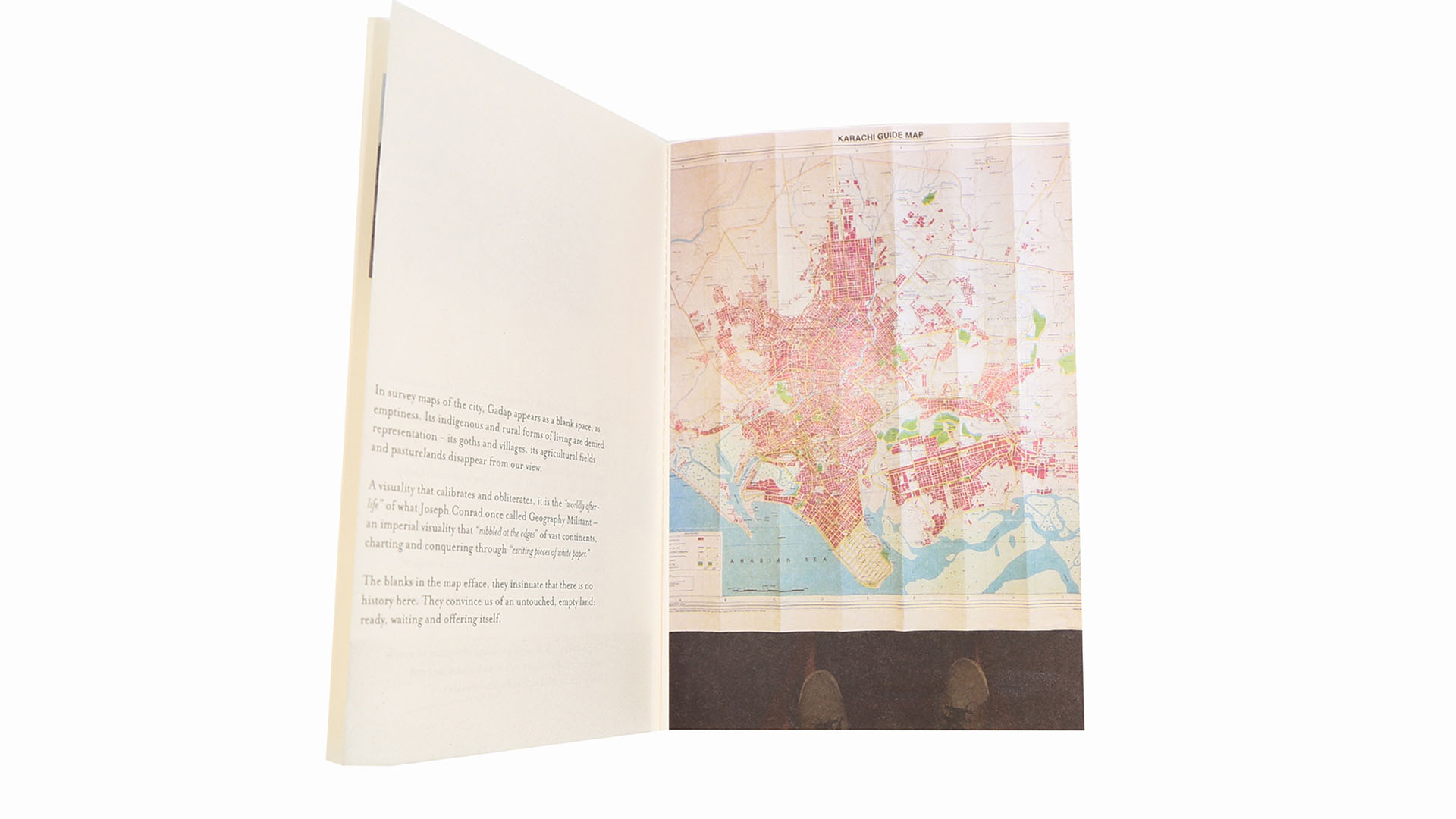Texture/Vision
As part of Vasl’s initiative for Urbanities – Art and Public Space in Pakistan, artists Shahana Rajani and Zahra Malkani were invited to consolidate their research on Gadap Town and to develop a publication during their stay at Vasl. The publication was produced in a limited edition of fifty books.
The artists compiled their research of narratives and personal reflections on their excursions and findings at Gadap town, a commercial development project for Bahria Town, into a book. This publication is divided in half for both artists – with visuals and data related to the geography of Gadap titled Texture/Vision presenting the artists’ insightful nature and understanding of a changing landscape, hasty urban development and the sidelining of Gadap’s inhabitants by the developers.
Their residency concluded with a live reading session, alongside a projection of their documentation and videos. Rajani and Malkani read excerpts from their book to an audience on the Vasl rooftop. The evening was well attended and included a short question and answer session.
From February – July 2016 we carried out a course titled The Gadap Sessions as part of our long-term collaborative project, Karachi Art Anti-University. The Gadap Sessions was a site-specific, research-based course carried out in Gadap Town using visual research methods to study, document and understand this historical township and its indigenous communities in light of contemporary processes of development, displacement and climate change. We took as our starting point the ongoing real-estate mega development project of Bahria Town, which is violently transforming over 35,000 acres of land in Gadap, dispossessing indigenous Sindhi and Baloch communities to whom the land belongs to. The course brought together an inter-disciplinary team of artists and researchers to collect and produce multiple forms of documentation, mapping and witnessing Gadap as it struggles against erasure – its disappearing and emergent ecologies, new architectures, erased histories and persevering struggles.
Gadap Sessions engaged with indigenous communities of Karachi to understand the historical and contemporary practices of urbanization; to move beyond development fantasies and visualize/witness the very real and daily forms of violence that these sites embody and reproduce. In contrast to the dominant narratives that evoke Gadap as barren wasteland, we attempted to make visible the social, economic, physical and epistemic violent acts carried out by existing structures of colonialism and capitalism, which remain ever reliant on indigenous dispossession. We began tracing the violence of infrastructure on the earth, ecology and communities – its side, covert and unseen effects – to uncover the erasures and transformations of this sentient, nourishing landscape, alongside the slow violence of resource extraction and sand mining. We documented historical graveyards and monuments, local ecologies and livelihoods, indigenous folklore and oral histories as well as the incoming acts and architectures of occupation, enclosure and privatization. In the process we became acquainted with ‘the other’, erased histories, narratives, knowledges and ways of being in Karachi.
Our time at the Vasl residency was spent reflecting on this collective archive. The open and flexible format of the residency gave us the space and time to study and to meditate on our research and experiences without the pressure to produce. Shifting from fieldwork to the studio allowed us a certain distance we needed to step back from the work we had produced and reflect more on process. As we sifted through the documentation, we realized how necessary it was for us to think through and make transparent our own experiences, roles and relations as artists and researchers. As much as Gadap Sessions taught us about the politics of development and displacement in Karachi, it has also been a lesson/struggle in the politics of research, collaboration and solidarity. The process of research was fraught and difficult, full of barriers and gaps, marked by boundaries. We spent all of our time on the frontiers of this fault line, this fracture. Encountering, respecting, drawing, overcoming, collapsing, crashing into boundaries. Seeing and sensing, sometimes crossing and sometimes maintaining distances, doing the work of trying to connect across disparate bodies and geographies through technologies and languages that are imperfect, flawed, but full of possibility.
During our residency, we produced an art publication, alongside a lecture-performance, that reflects on the processes and politics of research, representation and solidarity through the lens of vision and texture. It is an experiment in new textured and situated ways of seeing and representing, thinking through the possibilities/limitations of counter visuals that show the violence of neo-colonial environmentalism and neo-liberal exploitation of indigenous land and peoples in Gadap, while also laying bare our own personal, emotional and political entanglements. An inextricable interweave that refuses smooth surfaces, that defies an orderly undoing, in which multiple spatialities, temporalities, and power relations combine to form precarious constellations.
